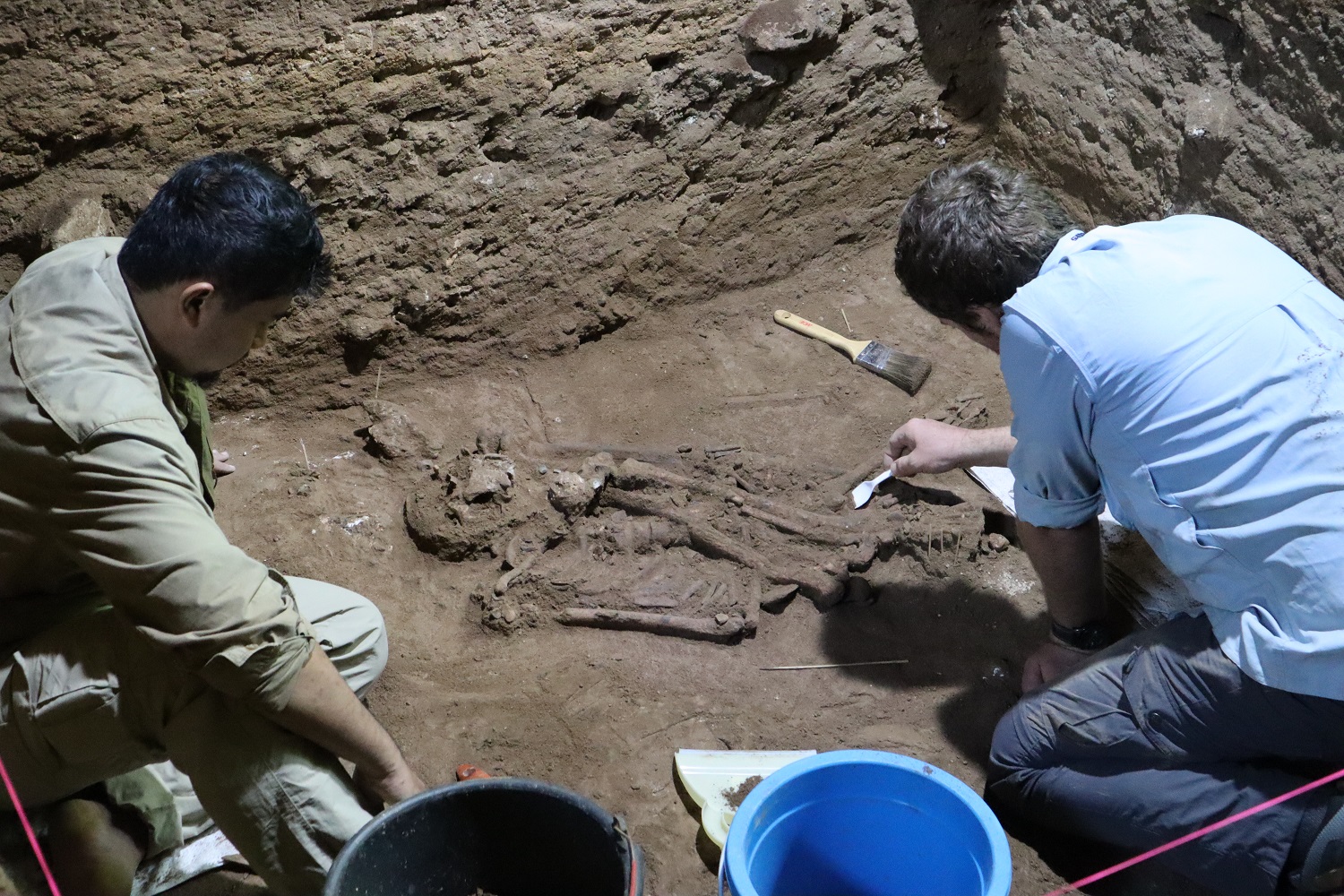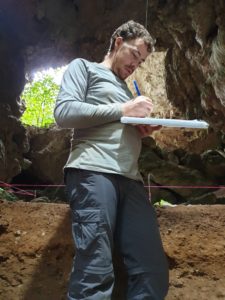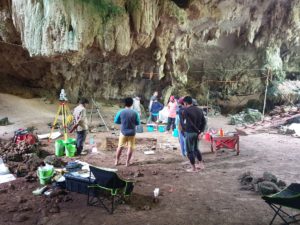
A team of Indonesian and Australian archaeologists co-led by Griffith University academics has unearthed the skeletal remains of a young hunter-gatherer whose lower left leg was amputated by a skilled prehistoric surgeon 31,000 years ago.
The discovery, published in Nature, is thought to be the earliest known evidence for a complex medical act, pre-dating other instances of stone age 'operations' found at sites across Eurasia by tens of thousands of years.
Professor Maxime Aubert from the Griffith Centre for Social and Cultural Research, co-leader of the research project undertaken with Indonesia's Centre for Archaeology, Language and History, said the new finding was brought to light in 2020 during an archaeological excavation at Liang Tebo.
Liang Tebo is a limestone cave in the remote Sangkulirang-Mangkalihat region of eastern Kalimantan, the Indonesian portion of Borneo, which is accessible only by boat at certain times of the year.
The archaeological excavation was overseen by Griffith researcher Dr Tim Maloney, along with Dr India Ella Dilkes-Hall (University of Western Australia) and Mr Andika Priyatno (Balai Pelestarian Cagar Budaya), with the field team surprised to observe that the human skeleton was missing its left foot and lower leg.
Analysis by palaeopathologist Dr Melandri Vlok (University of Sydney) confirmed tell-tale bony growths related to healing, suggesting the limb was surgically

amputated several years earlier when the individual was a child.
"In fact, it was a huge surprise that this ancient forager survived a very serious and life-threatening childhood operation, that the wound healed to form a stump, and that they then lived for years in mountainous terrain with altered mobility - suggesting a high degree of community care," Dr Vlok said.
Previously, archaeological research across Eurasia and the Americas had uncovered human bones that bore signs of prehistoric surgeries, including holes drilled in skulls (trepanation).
Up until now, however, the oldest evidence yet revealed for amputation surgery had comprised the 7,000-year-old skeleton of an elderly male Stone Age farmer from France, whose left forearm had been carefully amputated just above the elbow.
"Dating the remains directly turned out to be a challenging task," said Associate Professor Renaud Joannes-Boyau, Head of the Geoarchaeology and Archaeometry Research Group at Southern Cross University, who was given the task to calculate the age of the fossil.
By measuring the amount of radiation received by the tooth enamel during burial, Associate Professor Joannes-Boyau was able to confirm that the individual died some 31,000 years ago, in agreement with the radiocarbon age of the sediment.
"In light of the much younger age of these prior findings, the discovery of a 31,000-year-old amputee in Borneo clearly has major implications for our understanding of the history of medicine," Dr Maloney said.
Scholars had assumed that humans lacked the expertise and technology to perform difficult procedures like surgical amputation, until tens of thousands of years later after the emergence of farming communities and villages transformed human society within the last 10,000 years.

"It was thought the shift from foraging to farming at the end of the ice age gave rise to previously unknown health problems that stimulated the first incremental advances in medical technology, including the earliest attempts at stone age 'surgery'," Dr Maloney said.
"What the new finding in Borneo demonstrates is that humans already had the ability to successfully amputate diseased or damaged limbs long before we began farming and living in permanent settlements," Professor Aubert said.
"This is also in keeping with the evidence that ice age foragers in Indonesia had sophisticated cultural lifeways, as demonstrated from the early dates on cave art in Borneo and the adjacent island of Sulawesi," said team member Mr Adhi Agus Oktaviana - a Griffith University PhD student based in Jakarta at the Centre for Archaeology, Language and History.
The team says the surgeon(s) who performed the operation 31,000 years ago must have had detailed knowledge of limb anatomy and muscular and vascular systems to expose and negotiate the veins, vessels, and nerves and prevent fatal blood loss and infection.

Intensive post-operative nursing and care would also have been vital, and the wound would have had to have been regularly cleaned and disinfected to prevent infection.
The medical skill and proficiency demonstrated by this amputation contrasts with the litany of horrors that awaited patients of medieval surgeons in Europe, while modern medicine only reached regular amputation success following the discovery of antiseptics at the turn of the previous century.
According to Dr Maloney, it remains an open question whether the Liang Tebo find is simply the first known evidence for the hitherto unrecognised complexity of hunter-gatherer medical cultures that were much more widespread at this early period of human prehistory, or if the foraging communities inhabiting Borneo 31,000 years ago - then part of the Eurasian supercontinent Sunda - had acquired an unusually advanced degree of proficiency in this area.
"One possibility is that rapid rates of infection in the hot and humid tropics prompted early foragers in this region to tap into the rainforests' 'natural pharmacy' of medicinal plants, leading to an early flourishing in the use of botanical resources for anaesthetics, antiseptics, and other wound-healing treatments," Dr Dilkes-Hall said.






